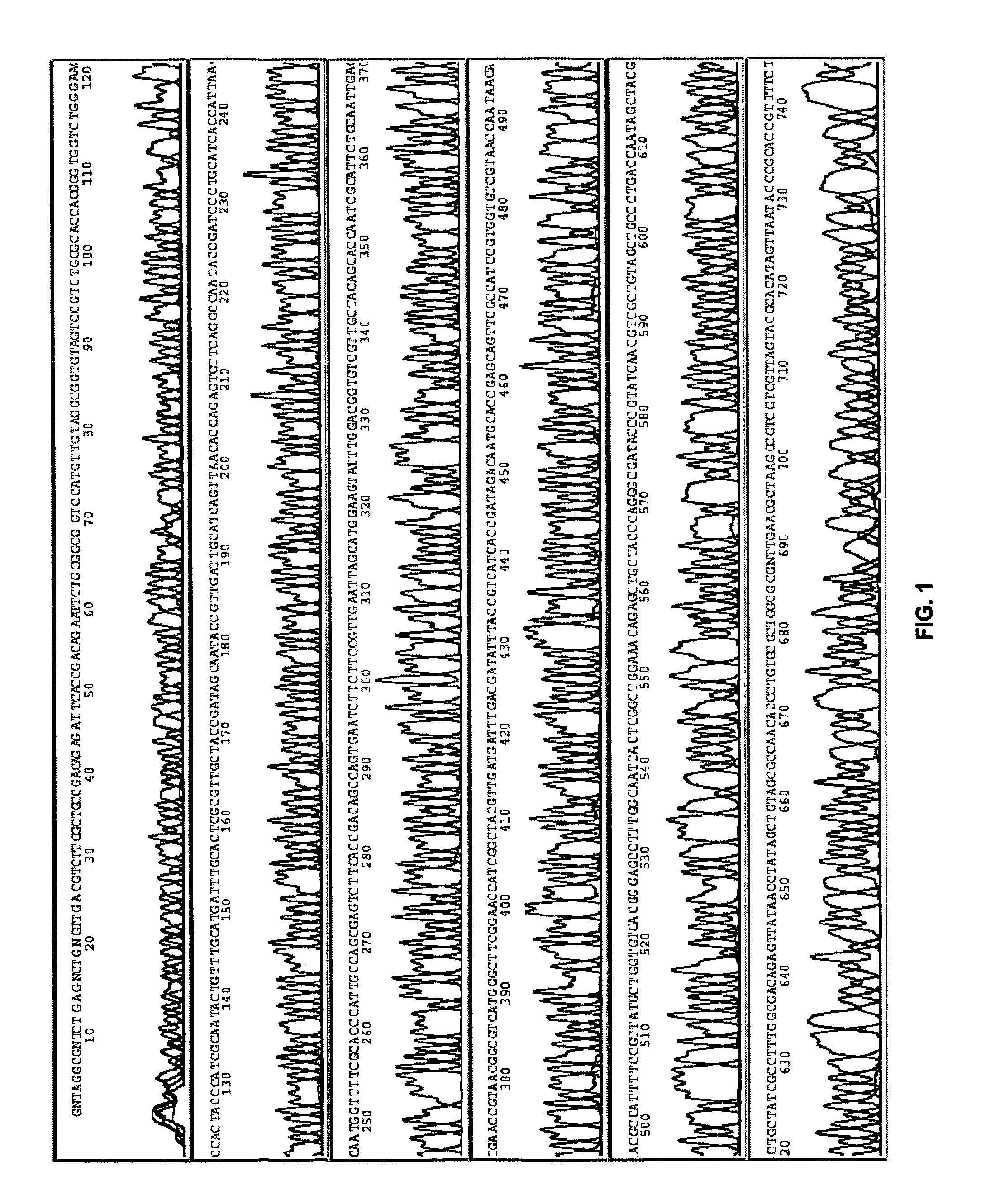Methods, compositions, and kits for amplifying and sequencing polynucleotides
a polynucleotide and polymerase technology, applied in the field of molecular biology, can solve the problems of difficult to accurately pipette, and viscosity of the amplification product, and increasing the risk of contamination
- Summary
- Abstract
- Description
- Claims
- Application Information
AI Technical Summary
Benefits of technology
Problems solved by technology
Method used
Image
Examples
example 1
7.1 Example 1
Amplification and Sequencing of a 2 kb DNA Insert
[0091]This example demonstrates an embodiment of an amplification and sequencing method.
[0092]Genomic E. Coli DNA (catalog no. 27-4566-01, Amersham) was randomly cleaved by partial restriction enzyme digestion, and sized by agarose gel electrophoresis. Fragments ranging between 1.7 and 2 kb were extracted from the gel and ligated into a pUC19 vector, followed by transfection into E. Coli (MAX Efficiency® DH5α™, catalog no. 18258-012, Invitrogen).
[0093]The cells were cultured, and plated on agar. In some embodiments, a single colony was picked, and cultured overnight. In an optional rinsing technique, 10 μl of the overnight culture was transferred to a tube, spun at 2000 rpm for 10 min, inverted, and spun at 300 rpm briefly. The cell pellet was re-suspended in about 5-10 μl water. 1 μl of this re-suspension was directly subjected to amplification as described below.
[0094]In some embodiments, a single colony was picked and ...
PUM
 Login to View More
Login to View More Abstract
Description
Claims
Application Information
 Login to View More
Login to View More - R&D
- Intellectual Property
- Life Sciences
- Materials
- Tech Scout
- Unparalleled Data Quality
- Higher Quality Content
- 60% Fewer Hallucinations
Browse by: Latest US Patents, China's latest patents, Technical Efficacy Thesaurus, Application Domain, Technology Topic, Popular Technical Reports.
© 2025 PatSnap. All rights reserved.Legal|Privacy policy|Modern Slavery Act Transparency Statement|Sitemap|About US| Contact US: help@patsnap.com



